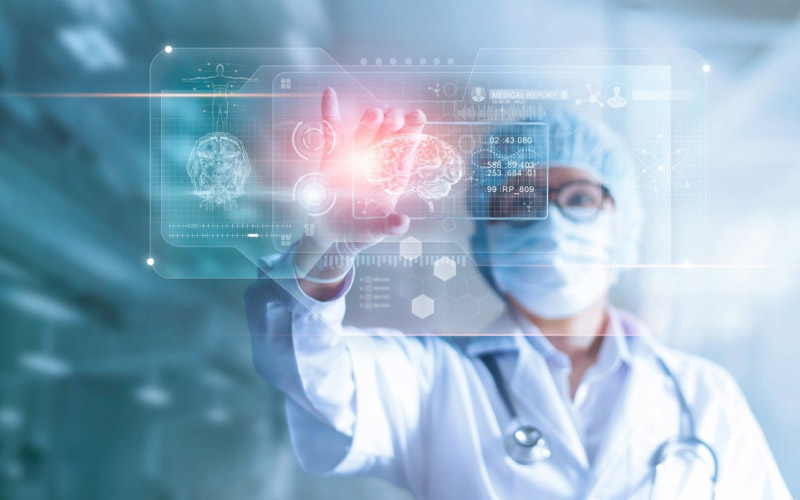The late 1950s. Nearly six decades before the pandemic hit us, that’s when the first-ever healthcare technology was tested by NASA to monitor astronaut health. Over the decades, technology has shaped the healthcare industry – driving exciting innovations to identify, prevent, and treat diseases.
However, it only took a pandemic to accelerate the worldwide adoption of technological trends like AI, AR/VR, API health services, and more to revolutionize patient care. Virtual consultation has made it easier for patients to receive timely health services without in-person visits. And remote patient monitoring has grown popular after the pandemic.
A Deloitte report suggests that the Internet of Medical Things (IoMT) market is expected to reach $158.1 million in 2022. Further, doctors and healthcare providers are proactively embracing technology, as April 2020 saw a 28% increase in virtual consultations. Safe to say, technological innovations have the potential to make the healthcare industry more productive, accessible, and efficient.
Here are the top innovations that will transform the USA healthcare sector.
Telemedicine and Virtual Care
Telehealth uses communication technology to provide quality medical services to patients via video conferencing, phone calls, chat, and so on. The pandemic witnessed tremendous growth in telehealth services as many patients relied on – and continue to rely on – the internet to book consultations, look for doctors, and receive timely consultations. In fact, a study reveals that 57% of doctors now prefer virtual consultations over meeting patients in person.
As telehealth holds the potential to boost the reach of medicine – breaking down geographical and socio-economic barriers, it has now emerged as an economical means of treatment for patients with non-urgent and follow-up appointments.
Artificial Intelligence

AI is the driving force of healthcare innovation. Today, AI has improved the efficiency and accuracy of diagnosis processes which allows doctors to identify the root causes of an illness and offer personalized care to the patient by detecting early risk disease. In fact, it was an AI system that first predicted the threat of the coronavirus, even before humans could.
Artificial Intelligence can be applied to identify the chemical changes in our brain and reveal early symptoms of various mental illnesses, such as dementia. Not to forget, AI can assist the healthcare sector in collecting, handling, and analyzing vast data sets. Thus, promoting data-driven decision-making and predictive analysis to drive future growth.
Big Data and Analytics

Big data in the healthcare industry can harness the massive amounts of data available for enhanced patient care. Big data, together with IoT, can help healthcare professionals visualize a patient’s medical history and identify potential health risks for early treatment. Doctors can utilize data analytics to prepare the best treatment plans for patients, and management can even predict future admission patterns based on historical data.
Further, big data has the potential to transform healthcare practices by:
- Offering assistive and preventive healthcare
- Recording and analyzing health records for better services
- Encouraging effective research and development
- Identifying user statistics and patterns to drive future decision making
Augmented and Virtual Reality
Believe it or not, AR and VR are leading the technological revolution in the healthcare market. According to a report, virtual and augmented reality in the healthcare industry is expected to reach $5 billion by 2025.
Both these technologies offer feasible solutions to improve patient care, from treating stress disorders to assisting in surgeries. VR is now being actively used to train surgeons or as an effective pain management tool. Whereas AR headsets can assist surgeons by offering them real-time information during surgeries.
What’s more, AR and VR technology can help detect the early signs of tumors, autism, cancer, etc. At the same time, VR 3D modeling can map out cancer cells and provide the best treatment to the patients.
Final Words

As the healthcare industry continuously strives to improve patient care, these key technological trends will be the driving force. While telehealth and virtual care will make medical services more accessible, AI and big data will allow professionals to offer timely treatment based on accurate data.
